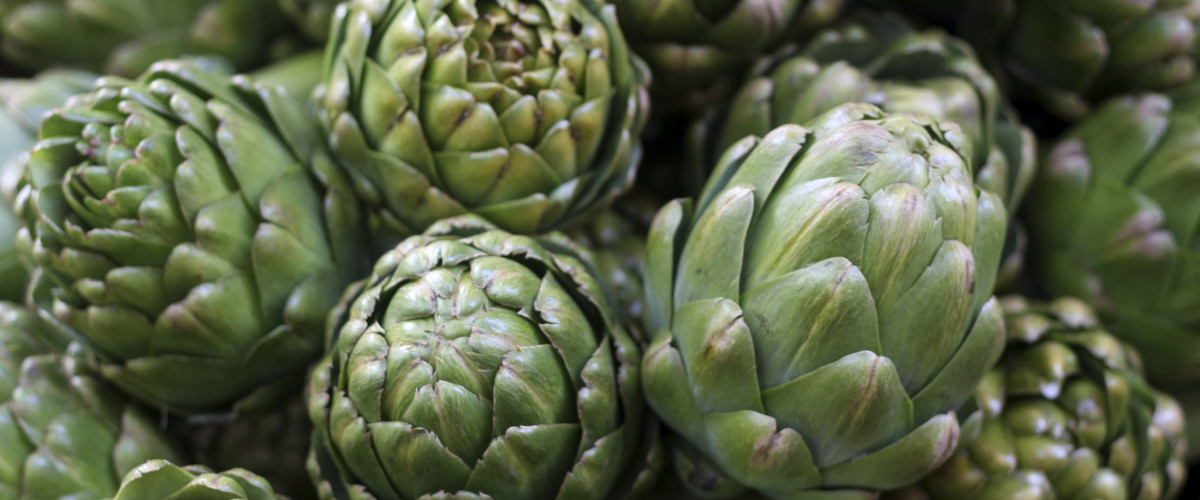IN PRAISE OF ARTICHOKES

Surprising Information
I love artichokes, but until recently I assumed that, with their pale drab green color, they weren’t particularly healthy. Mostly I thought of them as an excuse for eating melted butter or mayonnaise.
But I have learned from a book by Jo Robinson that artichokes are one of our healthiest vegetables. The book, called Eating on the Wild Side: The Missing Link to Optimum Health, provides loads of interesting and useful information about which specific fruits and vegetables to choose and how to store and prepare them to get maximum flavor and nutrition.
Robinson explains that artichokes are indeed low in beta-carotene, that vitamin A precursor that’s found in deep green and orange vegetables. But they have other compounds, called phytonutrients, which promote our health even though they aren’t classified as vitamins. Scientists have identified thousands of phytonutrients in various plant foods.
Humans Have Evolved to eat…
One of the main points of her book is that humans evolved to eat wild plants, naturally loaded with phytonutrients. But these phytonutrients often have a bitter taste, which many Americans don’t like, so food scientists have bred many vegetables to be less bitter, resulting in loss of phytonutrients. We eat blander, sweeter foods with far less nutritional value.
But artichokes are one vegetable that still has high levels of phytonutrients, leading to these health benefits:
- They heal and protect our livers from cancer, toxins, bacterial and viral infections, and the oxidation of LDL cholesterol. You might have heard of taking supplements of milk thistle for liver healing. Artichokes have the same compounds, which makes sense since they are in the thistle family.
- They are one of the richest sources of antioxidants, which protect us from toxins that can lead to cancer, blindness, diabetes, and other effects of aging.
- They contain the prebiotic inulin, which feeds the healthy bacteria in our guts, leading to better functioning of the gut and the immune system.
Healthy liver, healthy cells, healthy gut: we should be eating more artichokes!
Do it Yourself
I grow lots of my own food, and I highly recommend planting artichokes, which are actually big flower buds growing on huge, beautiful plants that come back year after year, at least here in the Pacific Northwest. And, at least so far, our local deer seem uninterested. Most importantly, we get small, tender artichokes that we can steam and eat just after harvesting them.
In the garden or from the store, choose smaller artichokes, which have a higher percentage of edible flesh, and the purply ones, which have extra phytonutrients. The nutrients perish quickly; refrigerate them and eat within 3 days. Steaming them increases nutrients, and steaming in the microwave decreases cooking time.
Even canned artichoke hearts have these good phytonutrients, although the cans themselves are unhealthy if they contain the chemical BPA. Look for glass jars or BPA-free cans.
If you don’t like the slight bitterness of artichokes, it’s okay to downplay it with melted butter (as long as it’s from grass-fed cows) or mayonnaise (as long as it’s made from healthy oils such as avocado or extra virgin olive oil). Most commercial mayos are made from unhealthy oils, which is why I make my own, adding garlic, lemon juice, and herbs. Enjoy the deliciousness of healthy vegetables and healthy fats!
